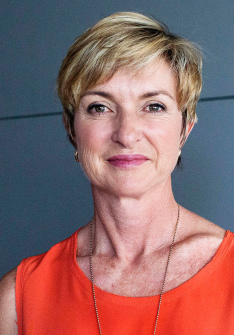Why the new APEX mobile exchange matters for the future of publishers
It’s been a long road to today’s announcement of the APEX mobile ad exchange by Fairfax and Nine Entertainment Co, but it is the first step for premium publishers in wresting back control of their own ad prices from the likes of Google, argues Nic Christensen.
We often talk about how the traditional ad-funded media business model is broken in the digital age, print dollars being traded for the digital dimes and all that.
What we don’t do is talk about what can be done in digital to raise or maintain that cost per thousand impressions (CPM), drive the sale of unsold online ad inventory and ensure that premium content providers (aka. the publishers who are investing in journalism and bringing together the audiences) can actually pay their bills or even, heaven forbid, make a profit.
Today’s announcement by Nine Entertainment Co and Fairfax Media sees the two publishers take a commendable step in the direction of collaboration to get better value from their digital advertising.
 Simply put they are agreeing to work together to make it easier for media agencies and their clients to access their online ad inventory (read top news websites: the SMH, Ninemsn and the Daily Mail Australia) through a programmatic exchange – a move made simpler by the fact they both already use AppNexus as their programmatic technology partner.
Simply put they are agreeing to work together to make it easier for media agencies and their clients to access their online ad inventory (read top news websites: the SMH, Ninemsn and the Daily Mail Australia) through a programmatic exchange – a move made simpler by the fact they both already use AppNexus as their programmatic technology partner.
What the premium publishers are after is simple: the size and scale to better challenge the likes of Facebook and Google who are increasingly beating them with large scale aggregated buying opportunities for media buyers across thousands of websites, typically at a lower cost.
Basically the move over a number of years to digital programmatic buying of online ads is a recognition that in 2014 a 25-year-old media buyer probably shouldn’t be asked to buy online advertising via a piece of paper.
All the major premium publishers (News Corp, Fairfax, Mi9 and Yahoo!7) now offer this, but for the last three years Mi9 has led the charge not only in programmatic but in terms of pushing the commercial rivals to come together and offer their unsold inventory in one place.
Mi9 were the first to launch a programmatic exchange in 2011 and Fairfax followed their lead some 18 months later. News Corp and Yahoo!7, the latter of whom’s programmatic exchange formally launched last week, have arguably trailed their rivals in this area.
The chronology and context behind today’s announcement are also relevant. It all began with last year’s, perhaps premature, media coverage about the idea of the four publishers coming together in one simplified premium publisher’s exchange for desktop ad inventory.
The story was first reported in The Australian in February 2013, and in March AdNews reported the exchange launch would be here “within weeks”. It wasn’t. There followed an extended period of radio silence as the competitors, shepherded by former Fairfax director of strategy Pippa Leary who had been appointed to head the then unnamed exchange, struggled to find a way to align their interests.
A process that might perhaps be most charitably compared to herding suspicious and mistrustful cats.
By July we reported that Yahoo!7 was jumping ship. At the time sources close to the discussions told us that Yahoo!7’s withdrawal was driven by concerns about the commercial arrangements being offered within the exchange, particularly around the costs and method by which inventory will be sold.
Others have since suggested technological issues around moving the publisher off Right Media technology and internal politics, coming from parents companies Yahoo! and Seven West Media, played a role too.
In August, News Corp announced a global programmatic ad exchange The News Corp Global Exchange using the Rubicon Project’s technology. At the time we noted News Corp’s global CEO Robert Thomson’s declaration on exclusivity that “third parties are no longer invited to the party” raised questions about News Corp’s involvement in a publisher’s exchange in Australia, even though News does not use third party networks in Australia.
Sources insist they were still committed to being part of the exchange, despite the recent sudden departure of CEO Kim Williams, which happened weeks before the Rubicon deal.
It is thought that while Williams was a strong advocate for News’s participation in the exchange, current CEO Julian Clarke, an old-school News Corp warrior, was more distrustful of working with the newspaper giant’s rivals on digital, especially as the months rolled on and the company saw a new and significant threat in the form of Mi9’s Australian joint venture with the Mail Online.
The collapse of the desktop exchange became official in early February 2014, with News Corp confirming it was pulling out of the deal. The confirmation came with the departures of head of commercial development Jason Barnes and director of commercial and product development Les Wigan, both of whom spearheaded programmatic at News, with no immediate replacements being named.
It appears that this point the strategy switched and Fairfax and Mi9 decided that with a desktop publisher’s exchange apparently unviable with just two parties, they would try for a mobile inventory exchange instead.
Mumbrella understands that Mi9 and Fairfax also brought in pay-TV sales house Multi Channel Network, who have also been a leader in programmatic and sells the inventory to Telstra’s digital assets among others, to help get a deal up, although the latter has over the weekend sought to play down its involvement.
It should be noted that MCN were not the only ones in market approached, with the likes of Seek and Carsales also thought to have had talks.
However, none of them have signed on and MCN, who were thought to be on board as recently as two weeks ago, are now out as well. While it’s possible that the News Corp connection may be relevant here, in regards to MCN, which sells Foxtel’s ads, and Carsales, at this stage the reason for the last minute reversal from a publisher which has been very vocal in its support of programmatic is surprising.
That leaves just the original two – Fairfax and Nine. It will now be up to them to make this work and prove to the market that together they can better compete with the power of Google’s DoubleClick exchange, which makes it easy for agencies and clients to buy large online audiences on thousands of third-party sites, crucially at very low cost.
The online behemoths, such as Google and Facebook, have been continuing to make strong inroads in online marketshare in Australia to the point where former Mi9 CEO Mark Britt last year described Google’s dominance of Australia’s online space as increasing a “Death Star” in the Australian ad market, dominating inventory and controlling, and taking a share of, ad prices.
There are also a number of interesting elements to today’s announcement, but to my mind the most important detail is that while APEX is a mobile exchange now they appear to be ready to flick the switch to both mobile and desktop relatively quickly.
This is a move that will help with that all important scale and heft given the SMH, Ninemsn and Daily Mail Australia are all now in the top ten Nielsen Online Ratings news websites.
The question will be can they convince media agencies and clients that APEX is a good place to buy premium inventory and help sell some of the unsold inventory that almost every online publisher has?
If they do you can be sure that other premium publishers will be interested and it is worth noting that media agencies are also pushing the issue of premium publishers getting fair value with the likes of GroupM’s Danny Bass highlighting the issue of publishers being able to pay for journalism.
Will others sign on? Given the politics and intrigue that have gone into today’s announcement that’s hard to say, but for my money I’d keep an eye on Yahoo!7.
While the former regime were not fans of the exchange, new CEO Ed Harrison and his commercial director Paul Sigaloff were heavily involved in much of the desktop exchange negotiations when they were the sales heads at Fairfax, before they moved across to Yahoo!7 late last year. You can be sure they’ll be keenly watching how APEX goes.
As will the likes of Google and Facebook, who will be hoping that the publishers continue to bicker and have disparate offerings rather than coalesce with the one exchange/offering.
Nic Christensen is the deputy editor of Mumbrella.






A real win for journalism in Australia. Google have an absolute disregard for the industry and this will provide necessary competition.
Great to see Pippa Leary back on the scene too. One of the pioneers of digital at Fairfax.
User ID not verified.
Intelligent well written and informative article – your days must be numbered.
How about doing a story – based on an Emperor sans clothes, Call it the “insane fixation on mobile advertising”. Start with who wants advertising on their phone – would you like it at home/work on a landl line? And how easy it is easy to ignore on a smart phone when you agree to accept it.. Billions wasted – largely on kids, and little evidence of success. Yeah, “we had remarkable succes, a 17% response rate to our offer of a free world trip for downloading an app etc.’ Try and find one example of a verifiable return on investment.
Of course, it’s hip to invest in mobile advertising – the mob down the road are in it,
I guess it could call for a new ‘ad age’ – “I know 95% of my advertising is wasted but the board doesn’t have a clue.” Thank God.
User ID not verified.
Good luck APEX. The market needs the competition.
Something is needed to stop total programmatic dominance by Google and Facebook. Keep the b@#$ards honest and keep the revenue in Australia and contributing to the tax base.
User ID not verified.
@george beard – bit grumpy mate? what happened? did you get disrupted?
the ‘insane fixation on mobile advertising’ you speak of?
it’s not actually a big media industry in AU
although massive amounts of people are using apps and mobile devices all the time – $$$ go where the eyeballs go right?
you can also find successful case studies out there
perhaps drop your pre-existing notions and take a look around?
User ID not verified.